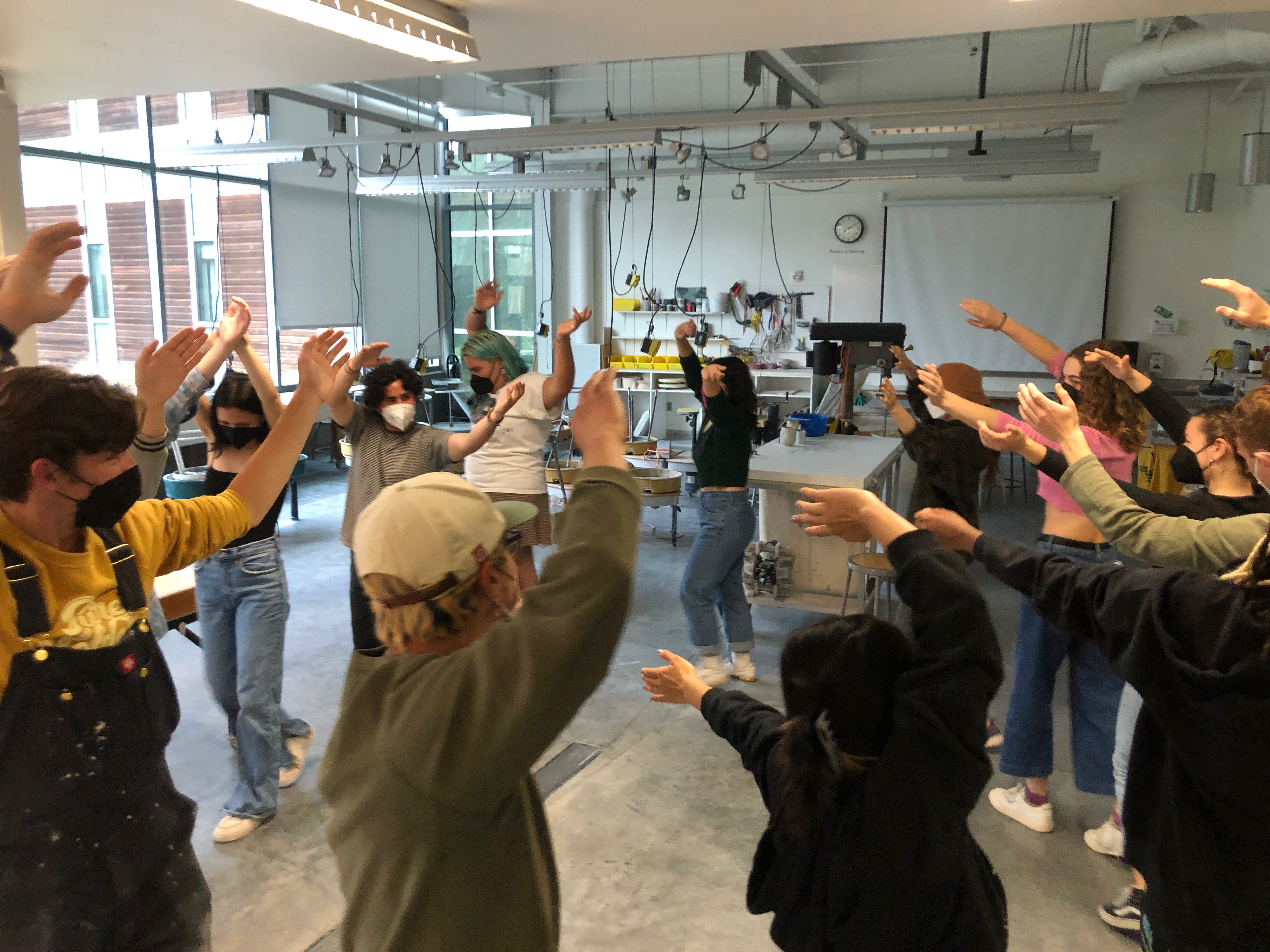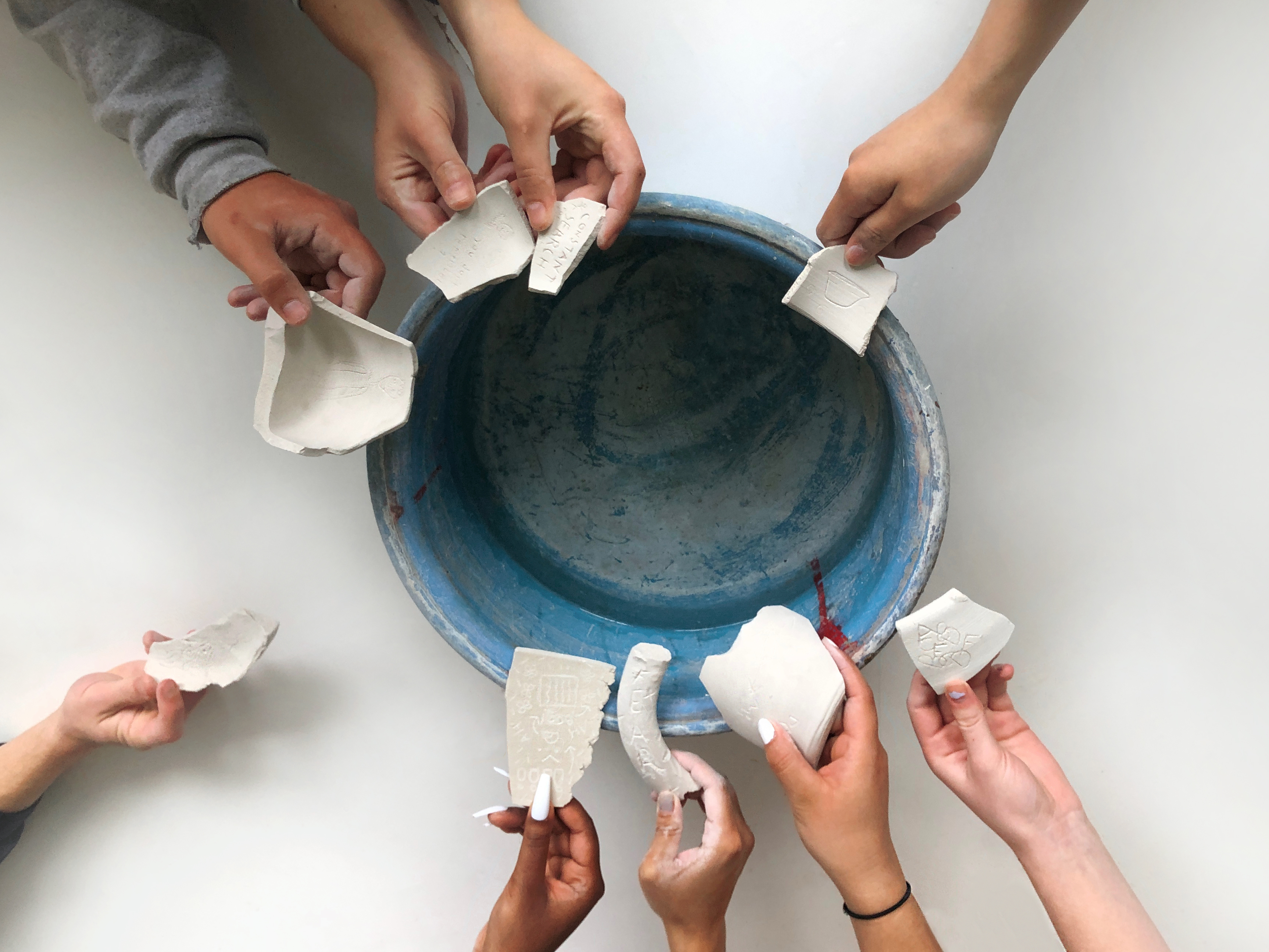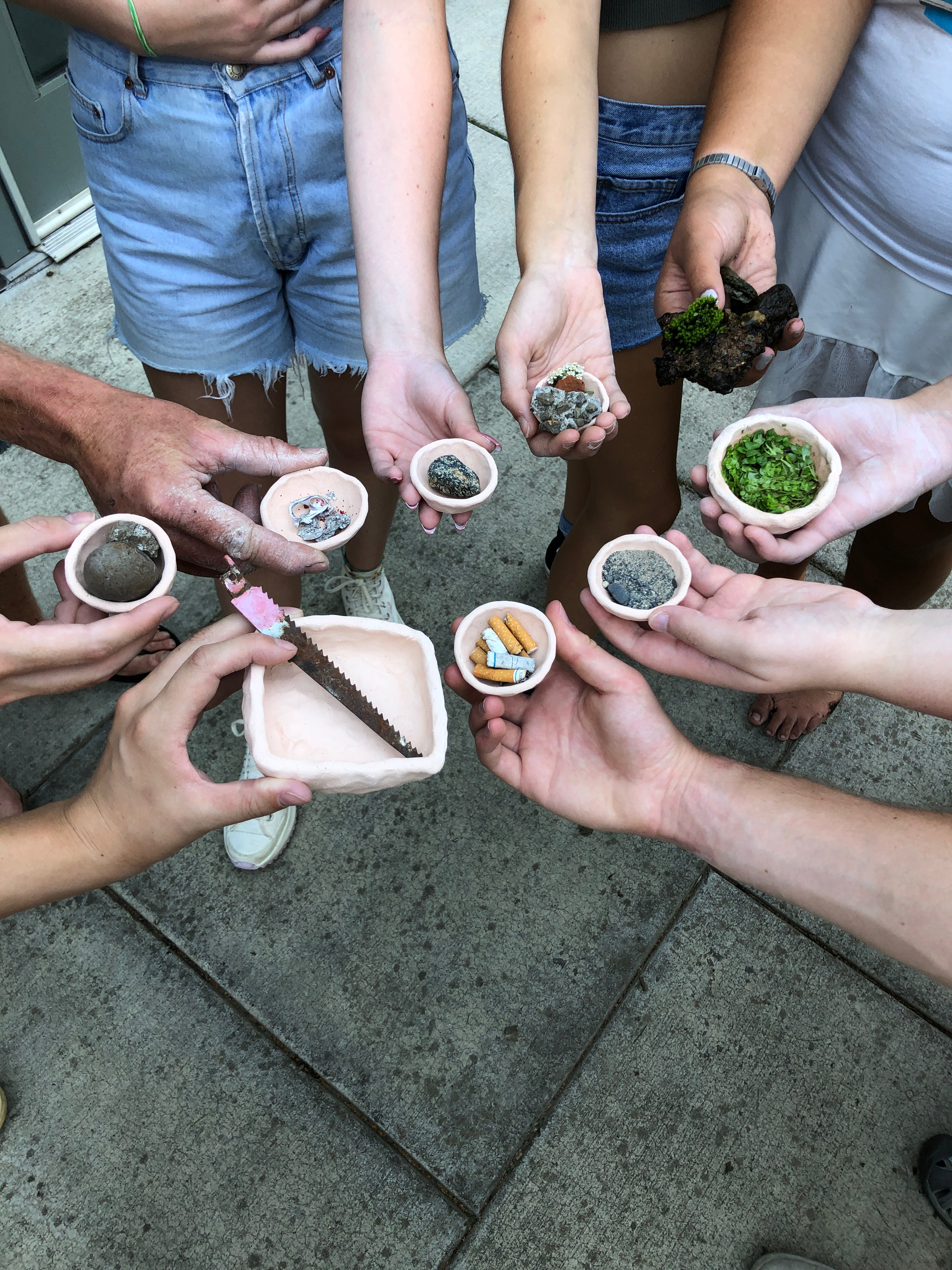Conceptual Ceramic Exercises
My teaching process involves quick, strange, collective activities that stimulate critical thinking, group process, and risk taking. Below are a selection of activities that occur on a regular basis in my courses. Additionally, these activities build trust among in the group, which contributes to stronger critiques and other moments when group cohesion is imperative.
Finding Center: Be The Clay


Time Required: 5-8 minutes
Level: Beginning Ceramics. This activity should occur in the first 1-2 weeks of throwing, just after students learn to make a cylinder.
Learning Outcome: Finding poetic metaphors between throwing and collective experiences. Remembering and embodying the formal process of throwing.
Instructions
Level: Beginning Ceramics. This activity should occur in the first 1-2 weeks of throwing, just after students learn to make a cylinder.
Learning Outcome: Finding poetic metaphors between throwing and collective experiences. Remembering and embodying the formal process of throwing.
Instructions
- Everyone stands in a circle. The instructor explains that collectively the group must make a thrown pot using only their bodies, no clay.
- The instructor puts on exciting minimal music, such as Steve Reich’s Music for 18 Musicians
- The instructor calls out various steps of throwing, in order. “Centering!” “Making a Well!” “Widening the Well!” “Pulling up!” “Shaping!”
- If the group gets off center, the instructor provides feedback “This pot is looking a little wonky!”
- The activity ends when the group arrives at the shape of the collective vessel and it spins successfully on center.
Critique a Bag of Clay
Time Required: 30 minutes
Level: Intermediate or Advanced Ceramics. This activity should occur in the first 1-2 weeks of the semester.
Learning Outcome: To speak and think conceptually about clay as a material and investigate how different forms the clay takes influence our reading of the material
Instructions
Level: Intermediate or Advanced Ceramics. This activity should occur in the first 1-2 weeks of the semester.
Learning Outcome: To speak and think conceptually about clay as a material and investigate how different forms the clay takes influence our reading of the material
Instructions
- Set a bag of clay on a pedestal.
- Students break into groups and critique the bag of clay using the following critique categories (inspired by Liz Lerman’s Critical Response Process):
- Formal considerations
- Conceptual considerations
- Material considerations
Ostracon Offerings

Time Required: 30 minutes (at the beginning of class)
Level: Beginning Ceramics. This activity should occur toward the beginning of the semester, when students are learning to reclaim clay.
Learning Outcomes: to meditate on the cyclical and eternal nature of ceramic material and to learn how to reclaim clay.
Instructions
Level: Beginning Ceramics. This activity should occur toward the beginning of the semester, when students are learning to reclaim clay.
Learning Outcomes: to meditate on the cyclical and eternal nature of ceramic material and to learn how to reclaim clay.
Instructions
- Instructor gives a short slideshow presentation on the history of ostracon shards.
- Students select a shard from the reclaim clay pile. Who made this object? Why was it rejected? How many times has this clay been recycled.
- Students are tasked with thinking of a secret they have never told anyone before.
- Students scratch their secret on the surface of their ostracon. Once the secret has been scratched into the surface, the instructor tells students to students ceremoniously and simultaneously drop their shards into a bucket of water.
- The group sits in silence for 30 seconds, listening to clay bubbling in the bucket.
- Group moves into other class activities for the day
- At the end of class, the instructor scoops up the slip and places it on the wedging table and instructs students on effective reclaim strategies.
- The following class session, students make a new object out of the reclaimed clay. This object is fired and made permanent.
Garbage Glaze Experiments

Many of the materials pictured were failed experiments, but there were a few successes. I believe sometimes students have to try things for themselves to learn what’s possible with a process or material. The group can collectively learn from both the failures and the successes.
Time Required: 20 minutes
Level: This activity is ideal for the end of the first day of glaze chemistry in Intermediate Ceramics, while students are also making successful basic glaze recipes.
Learning Outcome: to deepen technical knowledge of glaze chemistry and wild glaze additives
Instructions
Level: This activity is ideal for the end of the first day of glaze chemistry in Intermediate Ceramics, while students are also making successful basic glaze recipes.
Learning Outcome: to deepen technical knowledge of glaze chemistry and wild glaze additives
Instructions
- Students are given a lidded, bisqued pinch pot and tasked with locating a detritus material in the outdoor area surrounding the ceramic studio.
- Students are instructed to avoid organic materials such as leaves, bark, etc. It is not possible to collect enough organic material to see visible results in this activity.
- Students speculate on what might happen when these materials are fired.
- Students close the lids and put the materials in the test kiln. We view the results next class period. If any seem promising, further testing is completed.